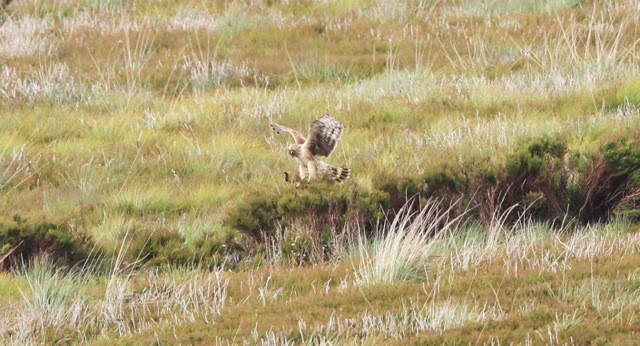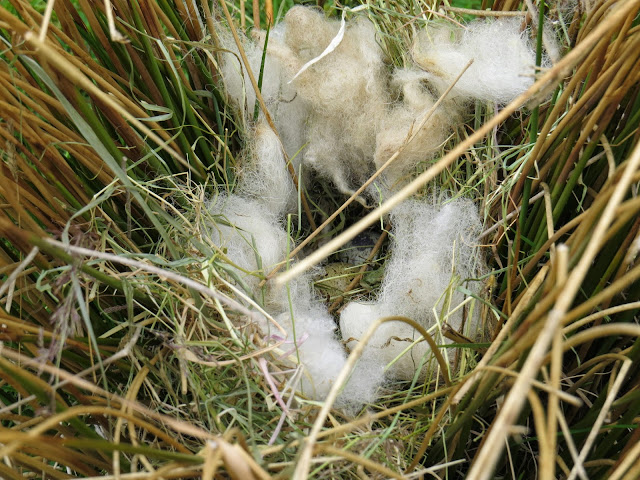October 2015 update
In general, it has been a chilly and bright start to Autumn and the gamekeeping team have been making the most of the dry weather to do some heather burning.
 |
| Langholm Moor |
It has been fairly quiet bird-wise up on the moor but there have been several sightings of Wheatears in the last week or so - looking very out of place amongst the frosts. I had a wonderful experience last week when I encountered 14 Ravens interacting together up on the high ground. I heard them before I saw them, that characteristic 'cronk' a real giveaway but I wasn't expecting such a large group. A couple of Buzzards made the mistake of getting too close and quickly moved on to another part of the hill.
 |
| Raven - the superb wedge tail clearly visible (John Wright) |
 |
| Tarras Valley (Tom Hutton) |
Hattie and Grainne, our 'resident' harriers continue to hunt Langholm moor for voles and small birds. Cyan (the young male harrier tagged at Langholm this summer) has been down in North Yorkshire for the last few weeks but a few days ago he returned home to Langholm. He didn't stay long but journeyed briefly over to the Moffat hills before returning to Langholm once again.
 |
| Cyan returns home to Langholm |
It has been quite a busy few weeks with educational activities - we were joined by Gretna Scout group a few weeks ago on an expedition onto the moorland edge and a visit to our bird hide.
 |
| Gretna Scout Group approaching |
 |
| Gretna Scout Group setting up for a delicious lunch |
We have enjoyed several activities with Langholm Academy over the last month including multiple visits with the S1 Biology students having a go at freshwater sampling in the Tarras. Working with the local schools to try and find practical opportunities to parts of their curriculum - like these students learning about Indicator Species and Simpson's diversity Index.
 |
| Langholm Academy students collecting data |
 |
| Langholm Academy students learning that even on a fairy bright dry day the moor can be cold and bleak place. |
 |
| Project stand at Canonbie Day of the Region |
We are pleased to welcome new part time member of staff Beckie Davies who did a work placement with us back in June. Beckie will be leading some education events in the coming months including two events this school half term.
Check out this link to our website for information on upcoming events: http://www.langholmmoorland.co.uk/events.html














































